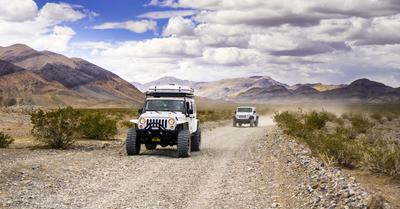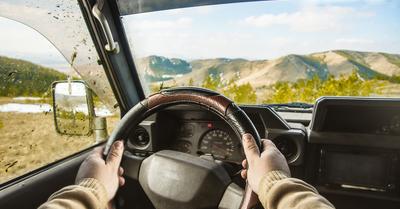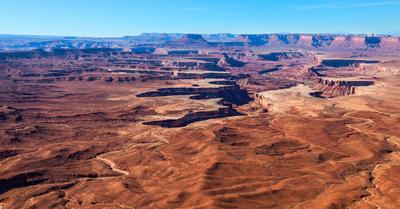If you want your vehicle to handle off-road terrains, then you are going to need to be equipped with the right suspension for your car, but how do you choose?
To choose the right suspension for your car, you are going to need to consider how much performance you want to achieve from your suspension based on the terrain that you drive on.
One of the most important features of any off-road vehicle is its suspension. At the end of the day, you can have the best make and model car with the best off-road tires on the market, but if your suspension is off, then your off-road capabilities are going to suffer, which can result in poor performance, as well as an increase in safety risks.
To ensure that your off-road vehicle is capable of handling everything that you throw at it, you are going to want to invest in some proper off-road suspension.
With that being said, off-road suspension installations can be incredibly dynamic given that this component of your vehicle is what allows you to take on so many different types of terrain.
What you are going to want to consider is what type of terrain you find yourself driving on and what kind of capabilities you want your vehicle to deliver on.
To help you understand this further, we are going to take a closer look at off-road suspension in more detail so that you can make the best choice for your car.
After years of working as a mechanic who specializes in off-road vehicles, I have had an extensive amount of experience dealing with off-road suspension installations. My experience has taught me that the best way to choose the right off-road suspension for a vehicle should be determined based on the off-road performance capabilities that the driver desires.
This article may contain affiliate links where we earn a commission from qualifying purchases.
Choosing Off-Road Suspension
If you have never had to deal with an off-road suspension installation in the past, then it is easy to feel a little overwhelmed by your options. Off-road suspension is a pretty technical aspect of your vehicle and there are a lot of variables to consider when weighing out your options. The reason for this is that suspension kits have been designed to cater to the needs of every driver out there based on the off-road performance that they want to achieve.
Although this can make choosing the right off-road suspension a bit more challenging, it does enable you to pick the installation that is going to suit your driving needs best. Before you begin picking out suspension options off the cuff, you should first reflect on exactly what kind of off-roading you do. Are you the kind of person that spends the majority of their time driving on rugged off-road terrains, which may require an advanced kit - or are you the kind of person that goes off-roading occasionally and still uses their vehicle for standard driving such as getting from Point A to Point B?
Determining the kind of terrain that you need your car to handle is going to be the most fundamental aspect of choosing the right suspension for your off-road vehicle. What you need to keep in mind is that the better suspension that you have for off-road driving, the worse your vehicle performance is going to be on standard roads. It’s important that you understand what you are sacrificing with off-road suspension, as you do not want to bite off more than you can chew. Drivers that go all out and install a top-of-the-line off-road suspension on their commuter vehicle are often disappointed by the performance issues that they have to deal with when hitting the highway.
With that being said, the same goes for drivers who do not install a capable enough off-road suspension, as this often results in performance issues when out in the backcountry. The key thing with off-road suspension is getting a balanced performance to meet your driving needs. Your off-road suspension is going to determine how well your car absorbs the impact of your terrain and it is going to give your ride stability when it needs it the most. Keep reading to learn more about how to choose the right off-road suspension for your vehicle.
Off-Road Suspension Systems
The technology behind off-road suspension only gets better as the years progress. Whether it is to handle more advanced work-related off-roading duties or simply for the pleasure of going out to hit technical terrains, off-road enthusiasts are expecting performance to steadily increase, which means that off-road suspension kits are constantly getting revamped with newer innovation.
To meet the needs of drivers out there, there are a variety of different off-road suspension types that have been designed to perform better for specific types of terrains and conditions. We are going to take a closer look at some of the off-road suspension types available and their performance capabilities.
Solid Axle Suspension
One of the most common off-road suspension types that many drivers have installed on their vehicles is a solid axle suspension, which is often referred to as a ‘beam axle suspension’.
This type of suspension is favored by many off-road drivers as being more durable and dependable. The design of a solid axle suspension allows your wheels to balance out when driving over uneven terrains.
As your vehicle hits imbalanced terrains such as on rocks and boulders, you will find that your car will lean in one direction or the other. The solid axle suspension enables your vehicle to balance out in this situation by having your axle work together as a single unit - as one wheel goes down, the other comes up.
So, if you are driving over an uneven surface, your wheels will naturally respond to this to keep your vehicle steady, which greatly minimizes your risk of rolling over on extreme terrains. In addition, this makes your off-roading much more comfortable when driving on minor uneven surfaces, as you can drive at fast speeds while keeping balance.
Solid axle suspensions often get more praise from drivers compared to other suspension types for their durability and reliability. The only main downside to this suspension type is that its design has less ground clearance than some other options out there. Overall, if ground clearance is not something you want to prioritize with your off-road vehicle, then you really can’t go wrong with a solid axle suspension, as this suspension type is generally more straightforward to install, which results in a more practical and affordable option.
Independent Suspension
The installation of an independent suspension setup can result in a more dynamic off-roading experience. The key feature of an independent suspension is that instead of your axles being connected and working together on each side, each wheel will respond independently of one another according to the terrain.
This can be very beneficial in many off-roading situations as you can rely on your independent suspension to tackle certain conditions that are not as suitable for solid-axle suspensions. One of the most important is the ability to significantly better handle ground clearance performance.
If you are the type of driver that deals with intensive and advanced off-roading terrains such as rolling over steep incline hills and boulders then ground clearance is a suspension feature that you do not want to overlook.
In addition, an independent suspension system provides even better stability than a solid axle suspension. While a solid axle’s suspension enables your wheels to respond to uneven terrains with its design, it often leads to a lot of movement in the cabin, which results in a less comfortable off-roading experience.
An independent suspension system on the other hand has a much better response to this type of terrain. The ability for each wheel to respond to its terrain simultaneously without being joined together allows your vehicle to have better handling.
With that being said, while the independent suspension does have a lot of great features and characteristics, it does often lack the durability and dependability of a solid axle suspension. Independent suspensions are notorious for having more mechanical issues and breakdowns, which is problematic in any situation when you are off-roading, but especially if you are out in the backcountry.
The independent suspension’s lack of durability means that you can expect to pay more money for repairs and installations down the line. This may particularly become an issue if you plan on pushing your suspension and off-road vehicle to its limits. If you are okay with dishing out a little extra cash or are capable of mitigating how much wear and tear you put on your independent suspension system, then you will find that this going to be a great option for your off-road vehicle.
Off-Road Suspension Springs
Once you have decided on the suspension system that best suits your off-roading needs, you can get into the more specific details of your system by choosing the type of springs that you want your vehicle to have.
There are two primary types of suspension spring types that you will find on most off-road vehicles - leaf springs and coil springs. Your springs in combination with your shock absorbers are what will allow your off-road vehicle to handle specific types of impact. Each suspension spring will absorb impact in a slightly different way and although both designs are fantastic for off-roading, you will find that one may suit you better than the other.
Just like with the suspension system, you will want to consider the type of terrain that you drive on so that you can choose the best suspension spring for your vehicle. Let’s take a closer look at off-road suspension springs.
Leaf Springs
The leaf suspension springs have a curved design, which results in each individual spring sliding over the next when riding on terrain.
Having these springs installed onto your off-roading vehicle has its perks and its disadvantages. Leaf springs were designed to help you maximize the amount of weight that your vehicle can handle, which is great for drivers that find themselves carrying a lot of gear, as well additional passengers.
However, drivers that have leaf springs installed on their off-road vehicles often have to deal with slightly poorer performance when hitting rough and uneven terrains.
This is a common suspension spring that you will see used on many solid axle systems, as their qualities tend to compliment each other. However, that does not mean that you cannot use leaf suspension springs on an independent suspension system.
Coil Springs
Coil suspension springs work differently than leaf springs, as they first compress and then extend when met with impact.
When your off-road vehicle drives on rough and uneven terrains, your coil springs will react to each impact by pumping hydraulic fluid, which results in the stabilization of your car. Just like with leaf springs, you will need to weigh out the pros and cons of the coil springs’ performance to decide which suits your driving needs better.
Unlike, leaf springs, coil springs are not going to be as capable of handling excessive amounts of weight. That does not mean that they are exclusively for light off-road vehicles but it does mean that you want to be mindful of the weight capacity that you strain your ride with. There are, however, different kinds of coil springs that will be better suited for specific weight capacities. So, if you feel that you need to handle more weight, then you are likely going to want to opt for larger coils.
Where coil springs really excel is in delivering driving performance. You will find that your off-road experience will be significantly smoother with the right coil springs installed, which is great for off-road driving at high speeds.
Factors To Consider
All in all, you are going to find that there are a lot of options for off-road suspension out there. There are off-road suspension kits that involve a complete installation of a full system and there are also options for custom installations that involve adding a specific type of feature to your vehicle.
You can get as technical with your off-road suspension as you like or you can keep it relatively simple. At the end of the day, what you want to put a primary focus on is meeting your off-roading needs.
If you are doing some extreme off-roading, then you are not going to want to hold back on investing in a technical system. On the other hand, if you are doing some light off-roading and trying to balance out this kind of performance with casual street driving, you may want to reconsider going all out on a suspension system by opting for a more well-rounded option. Here are some factors that you should consider when making your choice:
Budget
Off-roading can become a pretty expensive hobby and suspension installations can go into the thousands. If you need a high-end kit, you should expect to dish out a considerable amount of cash. However, if you are on a budget, you can always opt for a simpler installation or consider getting used parts.
Performance and Capability
Each suspension system, as well as its components are going to perform better for specific types of situations. You should decide on whether you want to maximize your off-road vehicle’s durability, weight capacity, or mobility when making a selection to ensure that your terrain needs are being met.
Comfort
It is rare to find an off-road experience that is ‘comfortable’ as this is not a driving sport that is meant to be cushy. However, certain suspension systems make for a considerably smoother ride, which is an important feature for many drivers - especially those that use their vehicle for more than just off-roading. If having a balanced level of comfort is important for your driving experience, keep that as a key point of whatever suspension system you end up going with.
The suspension system that you choose for your off-road vehicle is one of the most important elements of your driving experience, as it will determine your car’s capabilities on rough terrains, which results in not only increased performance but safety as well.





